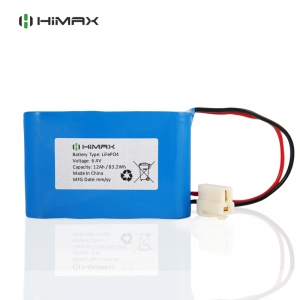Understanding the Cycle Life and Charge/Discharge Performance of LiFePO4 Batteries
LiFePO4 batteries have garnered significant attention in recent years due to their impressive cycle life and charge/discharge performance. As a leading energy storage solution, understanding the intricacies of LiFePO4 batteries is essential for businesses and individuals alike.
What are LiFePO4 Batteries?
LiFePO4 batteries, or lithium iron phosphate batteries, belong to the family of lithium-ion batteries renowned for their stability, high energy density, and long cycle life. Unlike conventional lithium-ion batteries, LiFePO4 batteries offer improved safety and thermal stability, making them ideal for a wide range of applications, including electric vehicles, renewable energy storage, and portable electronics.
What are the factors that affect the cycle life of LiFePO4 batteries?
Depth of Discharge (DoD)
The cycle life of LiFePO4 battery is closely tied to the depth of charge and discharge cycles. Generally, shallower discharge depths extend battery lifespan. It’s recommended to maintain discharge depths between 20% and 80% to balance performance and cycle life.
Charging Voltage and Rate
Excessive charging voltage or rate can induce stress within the battery, leading to reduced cycle life. Strict control over charging voltage and rate can prolong battery lifespan.
Temperature Management
LiFePO4 batteries may experience decreased performance at lower temperatures, while high temperatures accelerate battery aging. Therefore, effective temperature management is crucial for extending battery lifespan.
Frequency of Charge/Discharge Cycles
Frequent charge/discharge cycles can accelerate battery aging. Minimizing frequent charge/discharge cycles can extend battery lifespan.
How to maximize the lifespan of LiFePO4 batteries?
Control Depth of Discharge (DoD): The depth to which a battery is discharged during each cycle significantly impacts its overall lifespan. Avoid fully charging or discharging LiFePO4 batteries. It’s recommended to keep the depth of discharge between 20% and 80%. Deep discharge accelerates battery aging, so limiting the DoD helps extend battery life.
Avoid Overcharging: Control charging voltage and rate rigorously to prevent overcharging. Excessive charging voltage can lead to electrolyte decomposition and internal stress, reducing battery lifespan.
Effective Temperature Management: Ensure LiFePO4 batteries operate within the appropriate temperature range. High temperatures accelerate battery aging, while low temperatures reduce battery performance. Avoid exposing batteries to extreme temperature conditions and take measures to maintain optimal operating temperatures.
Minimize Frequent Charge/Discharge Cycles: Reduce unnecessary charge/discharge cycles as frequent cycling accelerates battery aging. Minimizing these cycles helps prolong battery life.
Utilize Advanced Battery Management Systems (BMS): Implement BMS to monitor battery status and adjust charging/discharging processes accordingly. This optimization maximizes battery performance and lifespan.
Avoid Vibration and Mechanical Stress: Vibrations and mechanical stress can damage LiFePO4 battery internals, leading to performance degradation. Minimize exposure to severe vibrations during installation and use.
Regular Maintenance and Inspection: Perform regular inspections and maintenance on LiFePO4 batteries. Ensure connectors and wiring are in good condition, clean battery surfaces, and check for any abnormalities. Regular maintenance allows for early detection and resolution of issues, prolonging battery lifespan.
In summary, through prudent control of charge/discharge cycles, temperature management, and the use of battery management systems, LiFePO4 battery lifespan can be maximized while optimizing charge/discharge performance.
For more information on energy storage solutions and battery technologies, visit himaxelectronics.com.




